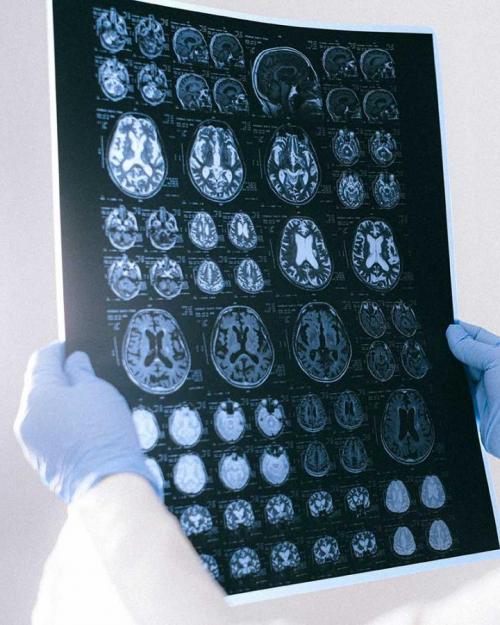How might people’s political ideology affect their perception of race?
Previous research by Amy Krosch, assistant professor of psychology in the College of Arts and Sciences, has shown that white people who identify themselves as political conservatives tend to have a lower threshold for seeing mixed-race Black and white faces as Black.
More often than liberals, Krosch found, white political conservatives show a form of social discrimination termed “hypodescent” – categorizing multiracial individuals as members of the “socially subordinate” racial group.
In new research published Feb. 22 in Philosophical Transactions of Royal Society B, Krosch used neuroimaging to show that this effect seems to be driven by white conservatives’ greater sensitivity to the ambiguity of mixed-race faces rather than a sensitivity to the Blackness of faces; this sensitivity showed up in a neural region often associated with affective reactions.
Taken together, these study results suggest white political conservatives might overcategorize mixed-race faces as Black not because of an aversion to Blackness, but because of an affective reaction to racial mixing more generally, Krosch said. The study appears in a special issue about political neuroscience.
“We knew from our previous work that conservatives tend to categorize more mixed-race faces as their ‘socially-subordinate’ race, or according to hypodescent,” Krosch said, “a principle closely related to notorious ‘one-drop’ rules, used to subjugate individuals with any nonwhite heritage by denying them full rights and liberties under the law from the earliest days of American slavery through the Civil Rights Era.”
In the new study, Krosch said, she and the other researchers wanted to figure out why this is the case: “Specifically, we wanted to know if conservatives and liberals differ in the way they are literally seeing, thinking or feeling about mixed-race faces.”
Mixed-race faces vary on at least two critical dimensions, Krosch wrote: “Do conservative and liberals differ in their sensitivity to the racial content or racial ambiguity of such faces? Such questions are difficult to separate in behavioral investigations but might be critical to understanding the link between ideology and hypodescent.”
In the new study, the researchers used functional neuroimaging (fMRI) – a proxy for blood flow in regions of the brain – to examine the role of neural mediators of political ideology on discriminatory hypodescent regarding mixed-race faces.
Forty-one self-identified white participants self-reported political ideology on an 11-point scale before the neuroimaging. Members of this ideologically diverse group of individuals were presented with computer-generated face images that ranged from 100% white to 100% Black at 10% increments while neuroimaging captured brain activity.
“Of primary interest was a specific neural region – the insula – because of its relevance in independent investigations of ideology, race and ambiguity,” Krosch wrote. The insula plays a key role in emotional processing, and the anterior insula is associated with processing ambiguity, so it might also be associated with political ideology and hypodescent, she wrote.
In the results, conservatives exhibited a lower threshold for seeing mixed-race faces as Black and this was related to their higher sensitivity to racial ambiguity in the anterior insula. Conservatives also made decisions faster than liberals. Together, these results indicate that conservatives might feel an aversion to racial ambiguity of any kind which causes them to resolve racial ambiguity “quickly and in the most culturally accessible or hierarchy-affirming way – that is, according to hypodescent,” Krosch writes.
Notably, conservatives and liberals did not differ in their responses to ambiguity or face Blackness in brain regions related to lower-level visual processing or social cognition. “Rather than visually perceiving or thinking about mixed-race faces differently, conservatives might maintain a stricter boundary around whiteness (compared to liberals) because of the way they feel about racial ambiguity,” Krosch wrote.
These results advance understanding of the role of political ideology in race categorization, Krosch wrote.
“They also help to explain how and why multiracial individuals are often categorized as members of their most subordinate racial group – a phenomenon that enhances their vulnerability to discrimination and exacerbates existing racial inequalities,” Krosch wrote. “Given the myriad societal consequences of minority-group categorization and the large number of people who are potentially vulnerable to biased categorization, understanding the processes by which ideology reinforces the racial status quo is critically important.”




